Who the **** are you? I am not who you think I am.
Exploring identity and stereotype through word and image, collaborating across two high schools.
By Francis Allende
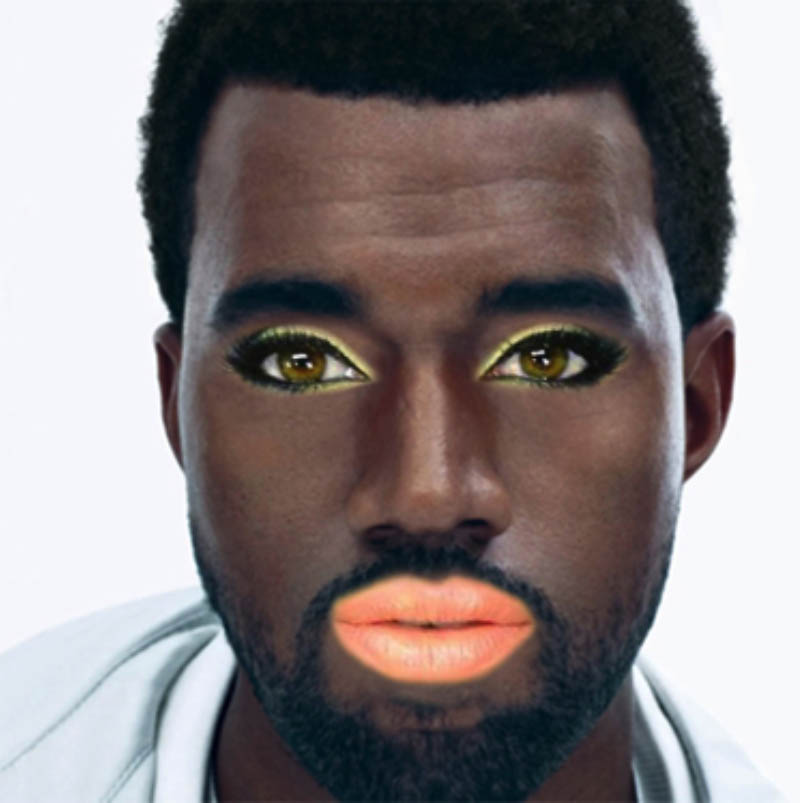
This unit focuses on the mapping and defining of the understanding of cultural stereotypes and identity, with the intention to promote positive perceptions of one's identity and culture as part of a larger community. It works with the understanding that the individual does not exist in a bubble, that we live in a community, and as such, we inevitably share the space with others as a part of a larger organism.
Issues of stereotype, culture, and ethnicity are discussed in depth, along with broader discussions of social issues, history, politics, and contemporary art. Students learn to look inward and outward to research, analyze, and draw informed conclusions about their own biases on cultural identity, stereotypes, and social politics through the lens of contemporary art. Through this project students develop a better understanding of visual arts, art history, language arts, social studies, global history, and popular culture.
During the discussion of project themes, students create their own narratives based on their perceptions of each other and their communities. They reflect, exchange ideas, and share artwork. Through exploration and discussion, the expectation is to engage in an open conversation about identity and stereotypes. Students use their own experiences as the motivation to pursue the making of a concentrated body of work that speaks for itself and addresses issues of identity and stereotype. They expand on this by connecting with the issues of culture, ethnicity, gender, and socio-emotional matters that are of interest to teens.
This project was a collaborative effort between two teachers and their instructional communities. In this case, the schools were located in suburban Michigan and urban Illinois. The participating students were not initially aware of each others’ community, ethnic, cultural, or social background. The students gradually learned about each other through exchanges of photographs and writings, producing interesting conversations between the participating students.
This project can be modified, anywhere between a 1-week to a 10-week unit, depending on how in-depth the teacher would like to explore the theme. It culminates with a student portfolio of work and an art exhibition. The students discuss identity and stereotype issues through the lens of contemporary art, using collaboration and technology in the classroom.
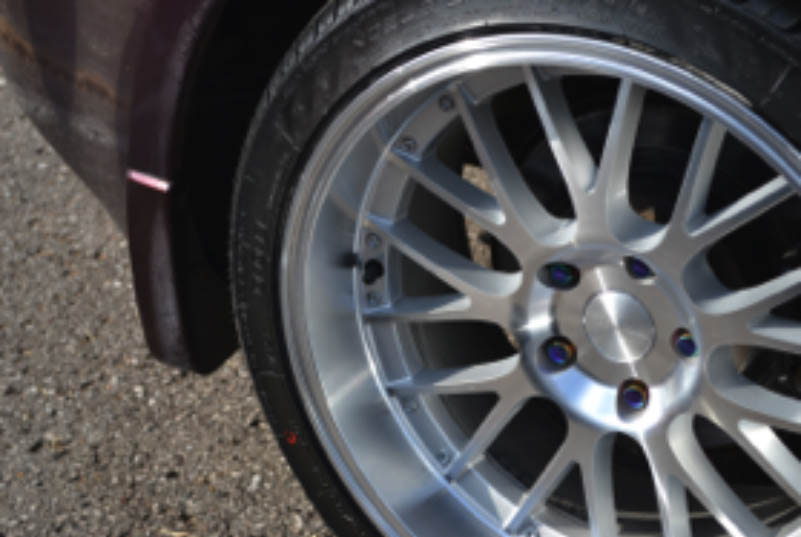
What should students know? Students will
- be able to understand and address the use and application of principles of design
- use Adobe Photoshop
- become familiar with basic computer skills
- manipulate a digital camera
- be able to identity and stereotype issues through contemporary art
- collaborate through technology in the classroom
Documentation + Assessment Suggestions
In the last two lessons of this unit, students document and curate their portfolios:
Lesson 11 Organizing Portfolio and Curating
Discuss composition, themes, concentration, purpose, and intent. Make a selection of 5 pieces per student to organize and include in an exhibition. Arrange a venue for the exhibition with your collaborating school.
Consider the meaning of the exhibition and the message the group wants to convey to the public. Students should have a strong voice in the way the artwork will be displayed and shared.
When organizing the portfolio, students should list an identifying title for each piece, as well as the medium, size, date, and the artist’s name, placing this information on the back of each piece. All pieces must be discreetly signed on the front left bottom corner using only the student’s first initial and last name, preceded by the month and year in which the piece was created. Mount the artwork on black mounting boards, adjusting the size depending on the images to be displayed.
Digital Sharing
Students upload their selected pieces to the online digital portfolio of the teacher’s choice. I recommend Behance.net because is free and simple to use. In addition, artists have the option to keep the portfolio private or public, apply copyright settings to images, and to select a Creative Commons sharing status.
Lesson 12 Assessment and Exhibition
Students write a statement of the main idea for their concentration of work, describing how they developed the idea. This activity is an assessment along with a 10-piece portfolio of student work. From this, they select at least 2, but no more that 5, pieces to be displayed in the exhibition.
During the exhibition, have an artist share-out with a roundtable presentation, including the collaborating school. This should be student-driven. This is the time in which the students interact with the collaborating school and exchange their views on the project and their experiences.
Learning Activities
Time Frame: The unit plan below fits approximately 10-18 weeks of 50-minute sessions that yield about 10 to 12 projects.
Lesson 1 Exploring Identity and Stereotype (Introduction and Writing)
Discuss cultural stereotypes, identity, language, representation, and multiculturalism through the lens of contemporary art.
Ask students the following questions:
- Why is it important to examine and express one’s individual identity?
- What roles do the visual arts play in expressing one’s personal story?
- What does it mean to be labeled or stereotyped? To belong to a group or not to be accepted as a part of one?
- What are your perceptions of other people who are different from your own cultural or social background?
- Why is fitting in important?
- What makes you, YOU?
- When is skin color a factor? Is it ever a factor in the development of your relationships with others?
Artists list for reference and inspiration: Lorna Simpson, Cindy Sherman, Francesca Woodman, Glenn Ligon, Kara Walker, Shirin Neshat, Kerry James Marshall, and Catherine Opie.
- Show examples from the artist list for reference and inspiration. You may want to create a slide presentation to introduce the topic prior the assign the guiding questions.
- Discuss vocabulary words such as identity, stereotype, culture, ethnicity to check for understanding and clarity.
- Ask the students to respond to the guiding questions. This can be done using Google Documents to allow for sharing and collecting information. Student must create a folder on the Google Drive. You may modify the sharing and collection system as necessary, or you may want to set up a different system for sharing and collecting information.
Lesson 2 Creating Images (Photography)
Discuss the results of the prior writing session and introduce the studio assignment.
You may have to set aside time to introduce students to the technical aspects of using a digital camera. If the students already understand how to use a digital camera and process the images, you can continue the lesson with a studio session.
For this session, ask the students to shoot images of the community. Do not explain the specific purpose yet, just that these images should show the reality of who they are or what they think is important to highlight about their space—where they are, who they are, and what they see.
This studio session allows students to walk around the school and adjacent areas surrounding the school (parking lot, around the block, nearby stores, homes, etc.) collecting images. These images may not include people. Student will collect at least 30 to 50 images, selecting 12 that will serve as an introduction of their environment, to share with the other school in this collaboration. Collect the images and create a slide presentation, and sending product to the teacher at your collaborating school.
Lesson 3 Interpreting the Collection of Images (Writing and Response)
Discuss the results of the photography session, having a brief critique of the photos received from the collaborating school.
Students respond in writing about their first impressions of the collaborating school photographs.
Assign the following questions:
- What do you see?
- Where is this?
- Why should I care?
- Why does it matter?
- Who lives there?
- What kind of people live there?
- What is your first impression of (collaborating school name here)?
- What are your perceptions of their school, environment, space?
- How is it different from your own cultural or social background?
Lesson 4 Interpreting the Collection of Images (Writing and Response)
Discuss the responses of the writing sent by the collaborating school in response to the first-impression photographs.
The students will respond to the first-impression photographs and writing with a new set of photographs and writing about themselves.
- Key question: Who are you?
The student will create a straightforward photography portrait. The students should photograph themselves as they want other people to see them, and as other people think of themselves.
Homework
As an additional assignment to this lesson, ask students to photograph themselves in their personal environments. Possible themes for the creation of such images are:
- 12 images documenting personal space
- 12 images documenting everyday personal events
- 12 images documenting or investigating personal, everyday objects
Students reflect again on the questions below as they prepare for the portrait session.
What do you see?, Where is this?, Why should I care?, Why does it matter?, Who lives there?, What kind of people live there?, What is your first impression of (collaborating school name here)?, What are your perceptions of their school, environment, space? How is it different from your own cultural or social background?
Share the new photographs and personal writing with the collaborating school. Discuss the responses. Students should use this new information to inform the next project.
Lesson 5 Fabricated Identity Portrait (Digital Manipulation/Collage)
Discuss digital manipulation and the concept of creating or recreating identity.
To explore how others create perceptions of people they do not know, introduce the concepts of photocubism, collage, and digital manipulation effects. Students create a composition using one of the portrait photos. They should manipulate the image by subtracting and adding, or by applying adjustments, filters, and effects. The students can add parts to their image, for example, from of other people they consider to have an ideal eye color, nose, mouth, etc. The resulting image should be a surreal or cubist digital collage. If preferred, this project can also be done by hand. Students may decide not to use computer software, in which case they may use scissors, magazine cut-outs, or copies of various images.
Students may include text. Direct students to use a haiku poem structure.
Additional project: Students can use a black-and-white copy of one of their portrait photos and outline the highlights, shadows, and midtones using Photoshop. During this process, the student can omit certain background details and enhance foreground details. The fine white line drawing appears on a solid black background.
Lesson 6 Symbolism Portrait (Digital Manipulation/Collage)
Discuss digital manipulation, the concept of cultural iconography, and representations of self. Briefly discuss the haiku poem and how its meaning can be used for an “I Am” poem (see below). The goal here is to create a digital or analog portrait using NeoPopRealism (see Nadia Russ or Zentangles. Students will use Photoshop to embellish their images by drawing symbols and other icons on top that represent who they are. These symbols and icons must have a connection with a student’s cultural and ethnic background. It should be a reflection of the student’s personality and it should incorporate text.
For the text, the teacher will introduce the students to the “I AM…” poem structure.
Also see: Freeology—I am Poem
Lesson 7 Mapping as a Political Action
Discuss the “I Am” poem. Introduce artists who work in mapping:
Students create a map depicting their comings and goings during a one-week timespan. They shoot photographs of their route to school, work, shopping, etc., creating a collection that includes landscape, buildings, people, objects, and so on. Students apply digital painting, collage, and manipulation techniques. Through overlapping, subtracting, and adding, the students create an abstract work inspired by their everyday life. Students may select the color of the flag they identify with, based on their cultural heritage. They may add a social component to the project by highlighting specific issues affecting their communities, for example: food deserts, gang activity, discrimination, safe schools, segregation, and so forth.
Lesson 8 Ethnic Profiling (Digital Photography and Manipulation)
Discuss the “I Am” poem structure. Introduce artists who work with the manipulation of images of self.
- Cindy Sherman
- ORLAN (see Self-Hybridization, Disfiguration-Refiguration, African Self-Hybridization, America-Indian Self-hybridizations, and Self-hybridizations Ópera Facial Design)
- Guillermo Lopez-Peña (see 4 Portfolios in Progress)
Looking at aspects of their ancestry, students create a portrait of themselves embodying the particular stereotype they are studying.
Questions:
- Why did you choose to portrait yourself in that way?
- What is your cultural and ethnic background?
- Of this stereotype, what is true? what is false?
- What should others think of you?
Lesson 9 Humans (Digital Photography)
Discuss portraiture photography. The goal is to capture the essence of humans.
- Humans of New York
- RJ Muna Galleries (examples of portrait photography)
Lesson 10 Statistics Identity Card
Discuss portraiture photography. Create an ethnic stat card.
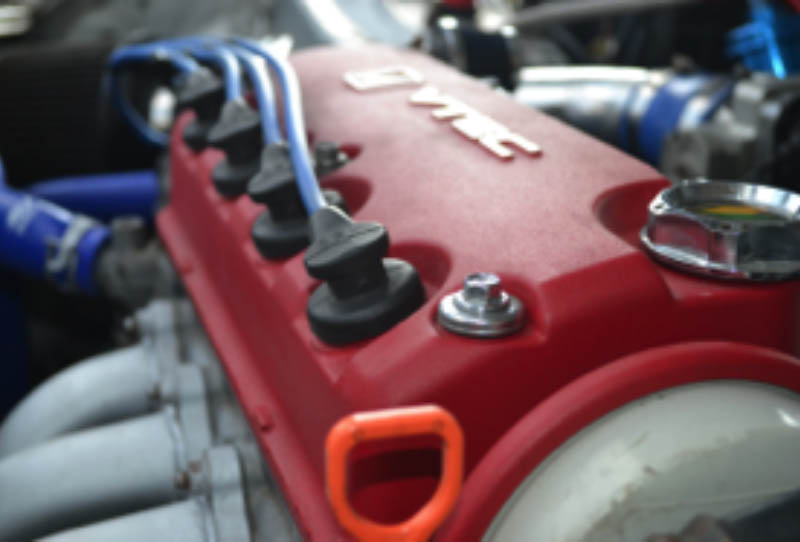
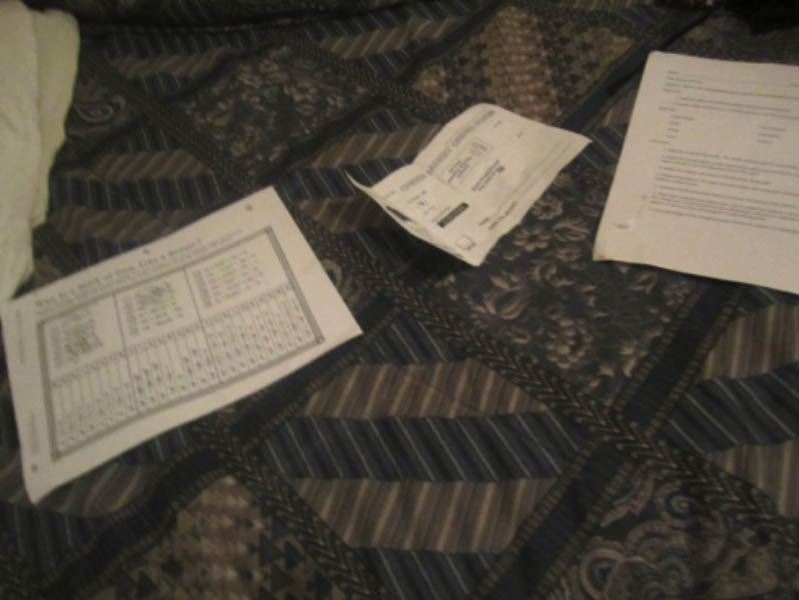
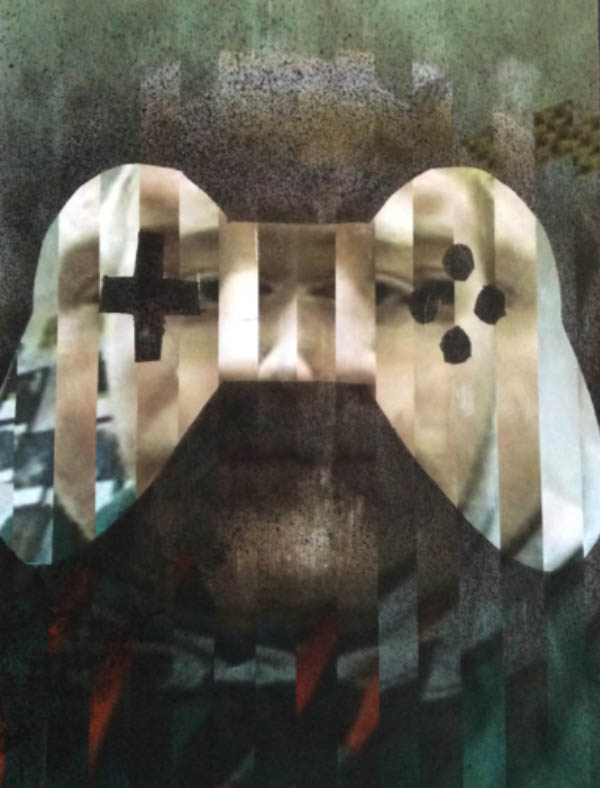

Materials + Supplies
- Laptop or Desktop computer
- Internet, Email and Google Drive
- Design software (Photoshop and Illustrator)
- Presentation capabilities (for example: PowerPoint)
- LCD projector and Elmo
- Online portfolio (for example: Behance.net)
- Audio software (for example: Garageband, iTunes)
- Video software (for example: iMovie, Adobe Premiere)
- Digital or printed images of various artworks to be viewed and discussed
- Photocopies of artist statements to be viewed and discussed
- DVD or online video clips of various artists to be viewed and discussed
- Music player
- Scissors
- Spray glue or glue stick (permanent)
- Mounting tape
- Black mounting board
- Printer (color)
- X-acto knives and rubber mats
MCA Connections
Students view contemporary artwork in the classroom and visit the museum as an extension of the classroom to continue conversations about identity and stereotypes. The visits to the museum have been used as an inspirational, re-charging hub. Other suggestions for connections are the MCA Creative Lab, Art 21 videos, creating music and other audio pieces, writing assignments, poetry sessions, photography safari, collaboration with nearby schools, and collaboration across curriculum or grade level.
Resources
Artist References:
Francis Allende
Edwin G. Foreman High School
Francis Allende is a passionate educator and artist with over 15 years of experience. She is a graduate of the Universidad Interamericana de Puerto Rico-Recinto de San German, with a BA in painting, black-and-white photography, and design. Francis received her teaching certification and master's degree in art education from The School of the Art Institute of Chicago. She is currently the Career and Technical Education (CTE) Department Chair and Coordinator at Foreman High School in Chicago, where she teaches Digital Media and Advanced Placement 2D Portfolio. In her spare time, Francis is raising a sassy Teenage Mutant Ninja Turtle fan and experienced lyricist, a very active 5-going-on-16-year-old-girl, together with her husband and their dog Aussie “Kipper Blueberry Bond” at their home in Logan Square. She loves cooking, and was once considered for a spot on the show Master Chef for her chicken salad and criollo hand roll. Francis was born and raised in Puerto Rico.
Francis developed this project in collaboration with Kim Baas, a graphic design teacher at Kentwood High School in Grand Rapids, Michigan. The idea for the project focused on basic concepts of identity and stereotype, in the search to expand conversation among students, their families, and their communities.
Francis reflects on her creative process:
There are so many narratives, perceptions, and definitions of what it is to “be” this, that, or the other. However, at times stereotypes stop being funny and become a permanent label for many of us. When that concept—the stereotype (this perception that we have of others as being different from us)—turns into an accepted definition of someone, that is when it hurts and becomes damaging. Lately, we have endured, experienced, and observed situations that have quickly developed into “racial” conflicts. What does the term “race” mean in this society? Are stereotypes and perceptions creating a large division? What about racial disparity? Is that influenced by our own perceptions of how “things” should be? What they should look like?
The process of developing this unit has been one of intense thinking and research. I have struggled with student commitment to buy into the topic for a long period of time. The “aha” moment happened when I realized that the project can be about using technology in the classroom to communicate.
I chose to participate in the MCA Teacher Institute because it is a way for me to maintain contact with other teachers who are interested in contemporary issues. It is a way to connect with my students and provide a venue for discussion, observation, and reflection within a space that allows for freedom, creativity, and expression. I feel more invested in the discussion of current events in the classroom via the lens of contemporary art. Contemporary art makes teaching meaningful, because it forces or inspires everyone to engage in inquiry and exploration. I feel that the inclusion of contemporary art discussions in the classroom somewhat “intellectualizes” the learning experience. It opens it up to more critical thinking conversations instead of “automaton”-like experiences. I would not call it pushing back, but rather, questioning certain practices, and reflecting on whether those practices are attuned with what really happens in a public education classroom, and what administrators require. I like the challenge of thinking deeply about my own classroom practices, and about how can I adapt and translate what I receive from the MCA.